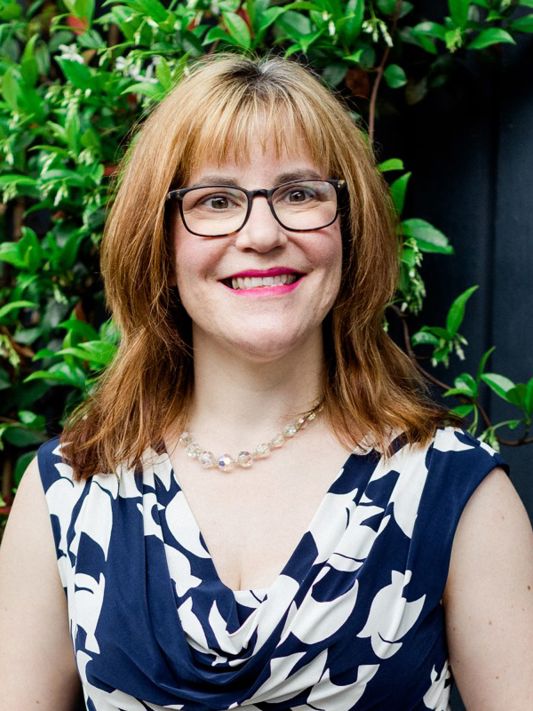Legacy giving in 2050
Published on
In this guest blog, Dr Claire Routley shares top take outs from her recent session at our Legacy Festival 2025, exploring the future of legacy fundraising.
It was wonderful to be part of Remember a Charity’s 25th anniversary celebrations a few weeks ago, alongside so many people from the legacy fundraising community. As part of the day, we spent some time thinking about the next 25 years, focusing on the world we might be fundraising within in 2050.
In order to bring that potential future to life, we looked at the contrasting futures of two older people: Ellie and Wren. Wren had inherited wealth which enabled them to live an elite lifestyle, benefiting from the latest longevity technology, personalised healthcare and having their life made smoother and easier by their robot PA.
Ellie, on the other hand, was struggling. Being a teacher with relatively little money to spare, she was still working in her 80s, whilst struggling to keep a sense of community alive in her neighbourhood, where the population – and particularly the number of younger people – was declining.
Lying behind the vision of Wren and Ellie’s futures were three key megatrends or long-term, global shifts that can change societies in a number of ways:
Wealth inequality
Wealth inequality – particularly the growth of inequality within countries, as opposed to between countries – has increased over recent decades. According to CIFS (n.d.), the richest 1 per cent has captured more than a third of additional wealth created since 1995, whilst the bottom half has captured just 2 per cent.
Humanoid robots
Whilst many of us already have a robot vacuum cleaner or lawn mower, the race is on to develop a more general purpose robot that could, for example, clean and tidy our homes. Indeed, more than 100 companies are currently racing to develop a humanoid robot.
Depopulation
According to McKinsey, two-thirds of people live in countries where the fertility rate is below the replacement rate. Countries such as South Korea and Japan are already seeing population declines. This is likely to have consequences not just for the shape of society’s but for healthcare, pensions and even a society’s values.
It's important to note, however, that these are just three trends out of many, and just one potential scenario of how they might combine to shape the future. With so many variables combining in an almost infinite number of ways, the future is ultimately unknowable.
Whilst that might make the future difficult to plan for, it also means that we, and our charities, can play a role in shaping that future: and indeed, a role in shaping a more hopeful, more equal future than the one we explored in the session. As Abraham Lincoln famously said, the best way to predict the future is to create it.
But what’s all of this speculation got to do with legacy fundraising specifically? Why should legacy fundraisers be exploring these different visions of the future?
Firstly, and perhaps more than any other fundraisers, we’re asking our donors to make a gift to the future. The more we’ve explored what that future might be like, the more compelling a vision we can present to our supporters of the future that we would collectively like to see, and that they, collectively, can help to bring about.
Secondly, although we don’t know exactly what the future will be like, we can guarantee that it will be different to today. By exploring different potential futures, we can start to think about how we might need to adapt our legacy fundraising strategies and tactics to meet the needs of our future supporters. In particular, by exploring various different visions of the futures, we can think about those issues that are likely to be common across those different futures – such as the development of technology.
If we have an eye to the long-term – 10, 20 or even 30 years in the future – we can start to plan in a different way. We might still have a strategy that runs for the next 3-5 years, but we can incorporate within it small steps to help us stay fit for the long-term. Rather than wait for our practice to be disrupted by emerging trends and have to make dramatic changes to what we do in five or ten years time, we can start to run small experiments now, which, over time, might lead us to make bigger changes to our plans.
As well as having relevance to our charities more broadly then, understanding and planning for the future should be a core part of our legacy fundraising practice. An understanding of the future can help us to be ready to meet the changing needs of our supporters, ensure our fundraising continues to be successful and, ultimately, that our organisations will be there, long into the future, to support those people that will need us – in 2050 and beyond.

About the author
Dr Claire Routley is Consultancy Director at Head of Consultancy at Legacy Voice and Post-Doctoral Research Associate at the University of Kent’s Centre for Philanthropy. She holds a PhD in why people choose to leave legacies to charity. Claire has worked for Bible Society, Age UK, WRVS and a local hospice, and teaches the Chartered Institute of Fundraising’s qualification courses.
Claire is also developing an on demand one day legacy fundraising course, which will be available through the Chartered Institute of Fundraising and freely available for all Remember A Charity members. This will be available in the coming weeks.

